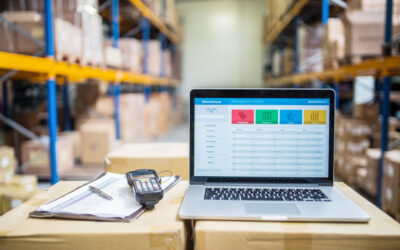What are the differences between inventory management software and asset tracking software? Both are useful in separate scenarios, and this guide will run you through the benefits of each.
In essence, inventory management software is helpful for stock and consumables, where asset tracking software is effective at tracking granular, asset level information.
Therefore, what your company needs will depend on your daily operations and the systems you already have in place.
Inventory Management Software Benefits
Inventory management software is very effective at tracking stock and consumables. This is because your inventory will change frequently and you won’t need to know specific details for each asset.
Inventory, therefore, can be added to inventory management software as non-unique profiles. In other words, as most of your inventory will end up with an end-user, the most important pieces of information are how much of your stock you have and how much you’re selling.
This means that inventory management software must be fluid, easy to monitor, easy to manage and pump out all the values and information you need to know. It does not need to show you unique identifiable information about all of your inventory.
Asset Tracking Software Benefits
Asset tracking software does the opposite. Instead of tracking inventory, or fluid, constantly changing numbers, it tracks assets on a unique level. In other words, with asset tracking software you will log all of your assets as unique, digital profiles.
Therefore, you can use asset tracking software for fixed asset tracking, tools and equipment tracking, IT asset management and more. This is because you can add granular information against your assets.
So, if a tool gets damaged, you will be able to pinpoint which tool is damaged, where the tool is, and rectify the issue with ease. You can also track locations with asset tracking software and speed up operations by using asset tags, operations that wouldn’t be relevant in an inventory management context.
The Differences
The main difference between asset tracking software and inventory management software is that one tracks unique, granular data, while the other tracks trends, movements, and overarching updates.
Both of these types of tracking are incredibly useful, however, they need to be applied to the correct use cases. For example, you won’t be able to track asset damage with inventory management software.
At first glance, there seems to be a lot of overlap between the two systems. For example, when you’re tracking fixed assets you need to know the number of assets for tax and insurance purposes.
The difference, therefore, is that stock and inventory is less tangible than a fixed asset. Fixed assets will remain within your business and will indirectly generate profit, where inventory will directly generate profit.
itemit’s Asset Tracking App
itemit’s asset tracking system is built for asset tracking and management. Within itemit, you can track unique assets and use helpful features to manage them. For example, you will be able to use itemit as an equipment booking system while also tracking your depreciation.
itemit does also have integrated inventory features. Now you can make master profiles to track stock levels. This is helpful when you need to report on the number of consumables you have but don’t need to know specifics about them.
With a public API, too, you will be able to integrate itemit with other systems, meaning you can interface between a system that’s tailor-made and proven to track your assets effectively, and one that’s effective at tracking your inventory, too.
To find out more about how itemit can benefit your business, you’ll be able to contact the team at team@itemit.com. You can also fill in the form below to start your 14-day free trial.

Try itemit
Choose a better way to track your assets. Start your free 14-day trial now!

Keep Learning
itemit Blog
Tips, guides, industry best practices, and news.
Buffer Stock in Inventory Management: How It Optimizes Supply Chain Efficiency
Learn the meaning of buffer stock, its role in inventory management, and how it optimizes supply chains. Explore strategies and tools for effective stock management.
What Is an Online Inventory Management System?
Discover what an online inventory management system is, how it works, and why it’s essential for efficient inventory tracking and business success.
How Inventory Financing Can Improve Asset Tracking Efficiency
Learn how inventory financing enhances asset tracking efficiency, streamlining operations, boosting cash flow, and improving inventory management for your business.


